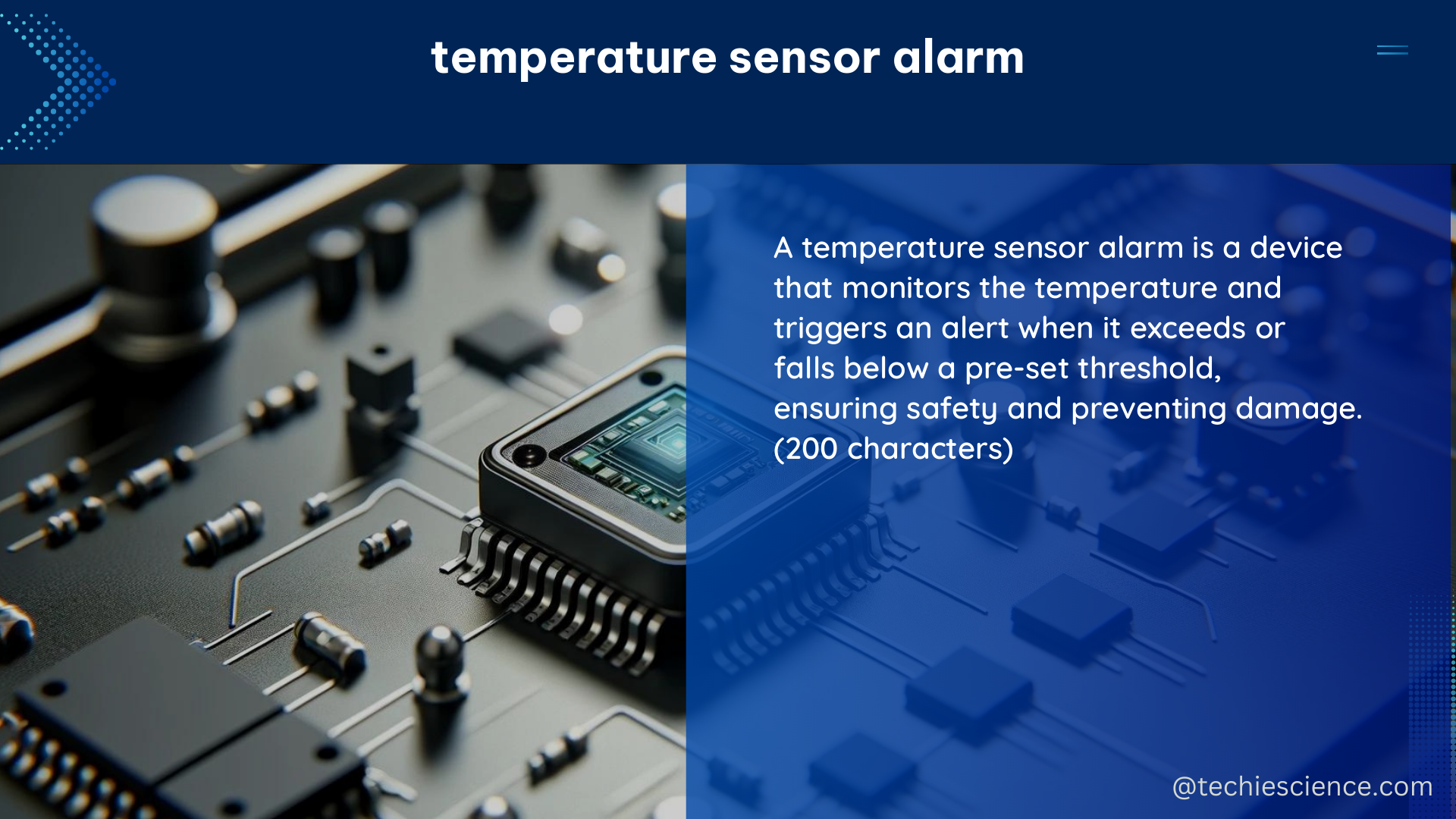Temperature sensor alarms are essential devices for maintaining precise temperature control in a wide range of applications, from data centers and industrial processes to environmental monitoring systems. These alarms are designed to detect when the temperature exceeds or falls below predefined thresholds, triggering alerts that enable timely intervention and prevent potential damage or failure.
Understanding Temperature Sensor Drift and Measurement Uncertainty
A study published in the ScienceDirect journal highlights the importance of accurate temperature data for structural health monitoring (SHM) in civil infrastructure. The researchers propose a novel method for detecting and quantifying temperature sensor drift using probabilistic neural networks. By analyzing the evolution of parameters in a trinomial probability distribution, this approach can effectively identify and measure sensor drift in temperature data collected over a seven-year period from a pedestrian bridge.
Reducing measurement uncertainty is crucial for ensuring the reliability of temperature sensor data. A tutorial on ResearchGate outlines an algorithm for sensor data uncertainty quantification, which could be adapted for temperature sensor applications. This method helps to minimize the impact of oversampling and other factors that can introduce uncertainty into temperature measurements.
Technical Specifications of Temperature Sensor Alarms

When selecting a temperature sensor alarm, it is essential to consider the following technical specifications:
-
Temperature Range: The range of temperatures that the sensor can accurately measure, often specified in degrees Celsius or Fahrenheit. For example, a temperature sensor alarm might have a range of -40°C to +85°C (-40°F to 185°F).
-
Accuracy: The degree to which the sensor’s measurements correspond to the actual temperature, typically expressed as a percentage or in degrees. For instance, a sensor might have an accuracy of ±0.5°C or ±0.25°F.
-
Response Time: The time it takes for the sensor to register a change in temperature, often specified in seconds or milliseconds. A faster response time is generally desirable for applications requiring real-time monitoring.
-
Power Consumption: The amount of electrical power the sensor requires to operate, usually measured in milliwatts or watts. Lower power consumption is beneficial for applications where battery life or energy efficiency is a concern.
-
Communication Protocol: The method by which the sensor transmits data, such as analog voltage, digital I/O, or a digital communication protocol like Modbus or CAN bus.
-
Environmental Specifications: The conditions under which the sensor can operate, including temperature, humidity, vibration, and electromagnetic interference (EMI).
Designing a DIY Temperature Sensor Alarm
For those interested in building their own temperature sensor alarm, a DIY approach is possible. The Stack Overflow post “How to subtract temperature effects from sensor data?” provides insights into removing temperature-related variations in sensor data, which is crucial for accurate temperature measurement.
When designing a DIY temperature sensor alarm, consider the following key components:
-
Temperature Sensor: Select a sensor with the appropriate temperature range, accuracy, and response time for your application. Popular options include thermistors, RTDs (Resistance Temperature Detectors), and thermocouples.
-
Microcontroller: Choose a microcontroller, such as an Arduino or Raspberry Pi, that can interface with the temperature sensor and perform the necessary data processing and alarm triggering.
-
Alarm Mechanism: Integrate an alarm system, such as a buzzer, LED, or notification system, to alert users when the temperature exceeds or falls below the predefined thresholds.
-
Power Supply: Ensure a reliable power source, either from a wall outlet or a battery, depending on the power requirements of your system.
-
Enclosure: Design or select an appropriate enclosure to protect the temperature sensor and other components from environmental factors, such as moisture, dust, and physical damage.
-
Software and Firmware: Develop the necessary software and firmware to read the temperature sensor data, compare it to the alarm thresholds, and trigger the alarm when necessary.
By considering these key components and leveraging resources like the ResearchGate tutorial and Stack Overflow post, you can create a customized temperature sensor alarm that meets the specific needs of your application.
Conclusion
Temperature sensor alarms play a crucial role in maintaining precise temperature control and preventing potential issues in a wide range of applications. By understanding the importance of accurate temperature data, the technical specifications of these alarms, and the possibilities of a DIY approach, you can ensure the reliable and effective monitoring of temperature-sensitive systems.
References:
- Pereira, M., & Glisic, B. (2023). Detection and quantification of temperature sensor drift using probabilistic neural networks. ScienceDirect. https://www.sciencedirect.com/science/article/pii/S0957417422019029
- An Algorithm for Sensor Data Uncertainty Quantification. (2021). ResearchGate. https://www.researchgate.net/publication/357012758_An_Algorithm_for_Sensor_Data_Uncertainty_Quantification
- Sensor System – an overview. (n.d.). ScienceDirect Topics. https://www.sciencedirect.com/topics/materials-science/sensor-system
- How to subtract temperature effects from sensor data? – Stack Overflow. (2023). Stack Overflow. https://stackoverflow.com/questions/77176312/how-to-subtract-temperature-effects-from-sensor-data

The lambdageeks.com Core SME Team is a group of experienced subject matter experts from diverse scientific and technical fields including Physics, Chemistry, Technology,Electronics & Electrical Engineering, Automotive, Mechanical Engineering. Our team collaborates to create high-quality, well-researched articles on a wide range of science and technology topics for the lambdageeks.com website.
All Our Senior SME are having more than 7 Years of experience in the respective fields . They are either Working Industry Professionals or assocaited With different Universities. Refer Our Authors Page to get to know About our Core SMEs.